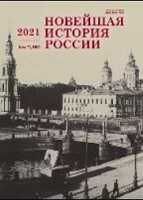Принудительный труд населения в условиях нацистской оккупации 1941–1944 гг. (на материалах пограничной территории Беларуси и Северо-Запада России)
Forced Labor of the Population under the Nazi Occupation of 1941–1944 (Based on the Materials of the Border Territory of Belarus and the North-West of Russia)
Author(s): Elena E. Krasnozhenova, E.A. GrebenSubject(s): Agriculture, Regional Geography, Political history, Labor relations, Politics and society, WW II and following years (1940 - 1949)
Published by: Издательство Исторического факультета СПбГУ
Keywords: Great Patriotic War; North-West of Russia; Belarus; occupation; crimes; forced labor; hijacking to Germany; еastern workers; labor exchanges; camps;
Summary/Abstract: The article investigates features of forced labor in the border territory of Belarus and the North-West of Russia during Nazi occupation of 1941–1944. The Wehrmacht used forced labor both in Germany by hijacking Soviet citizens there, and in industrial enterprises and in agriculture of the occupied territories. The civilian population was involved in the performance of certain work in favor of the occupation authorities. Peasants, in addition to traditional agricultural work and payment of in-kind taxes, were often forcibly involved in performing horse — drawn duties, peat and logging, railway protection, and mine clearance. Citizens were actively used by the occupying authorities to construct defensive structures and to work at industrial enterprises. Refusal to work was punishable by a fine, deprivation of ration cards, corporal punishment, and sentencing to a labor camp or shooting. Forced to work in enterprises, institutions, and agriculture, the population received meager wages and food rations, and the vast majority of workers lived below the poverty line. A special place among the crimes of Nazism in the territory of the North-West of Russia and Belarus, where the occupation went on the longest, is occupied by the forcible deportation of the population to Germany. From some settlements, the occupation authorities sent entire local populations to Germany without regard to age, health, or family circumstances. To provide the Nazi economy with labor, the occupation authorities paid considerable attention to propaganda among the population and the organization of recruitment campaigns. However, this did not contribute to raising the number of volunteers; instead, local residents in the occupied regions sabotaged the orders of the German-fascist command.
Journal: Новейшая история России
- Issue Year: 11/2021
- Issue No: 37
- Page Range: 908-920
- Page Count: 13
- Language: Russian

